Review: Combat Mission Shock Force 2
It has been years since I consistently picked up a Real Time Strategy title but those days are definitely over. Combat Mission Shock Force 2 fills a perfect gaming niche for these pandemic days, with challenging scenarios and replayability. I was able to play through the tutorial and jump into battle feeling about as prepared as any fresh trainee does. There were some learning curves in the first battles outside training and overall I think those reflect more on my skills as a commander than the game. After a few battles, it was gratifying to see a well-orchestrated maneuver sweep an objective.
Combat Shock Force 2 is not a new title but it is coming to thanks to a partnership between and . The default is US Army and Syrian Army/Insurgent forces, but there are DLC packs for Marines, British, and NATO Forces. For previous and future Battlefront.com customers, Slitherine is giving them a free Steam code for the game, and multiplayer works across all versions whether purchased from Battlefront, Matrix Games, or through Steam. If you need help with redeeming Steam Keys there is a nice resource .

The first thing that stood out was the combination of realism and playability. While this is not the most intuitive RTS you will find, it is a smooth pickup for the depth of options available. When it comes to realism there is a lot of room for debate, although I found Shock Force 2 consistently punished me for playing like it was Starcraft or Red Alert. When I played with patience and good tactics it got me a lot further, synchronizing movements and fires was so satisfying when dialed in.
The time options have a big part on this feel, as you are able to choose to play in real-time or turn-based. I preferred the real-time mode as it pressed me more to make decisions. The turn-based option was great for the tutorial and my first battle as it was more forgiving while getting used to controls. The option to press escape and pause gameplay in either mode was also a nice touch to ease stepping away during a battle. For me the game really shined when played in real-time mode, the constant flow of events kept me on my toes and posed the greatest challenge.
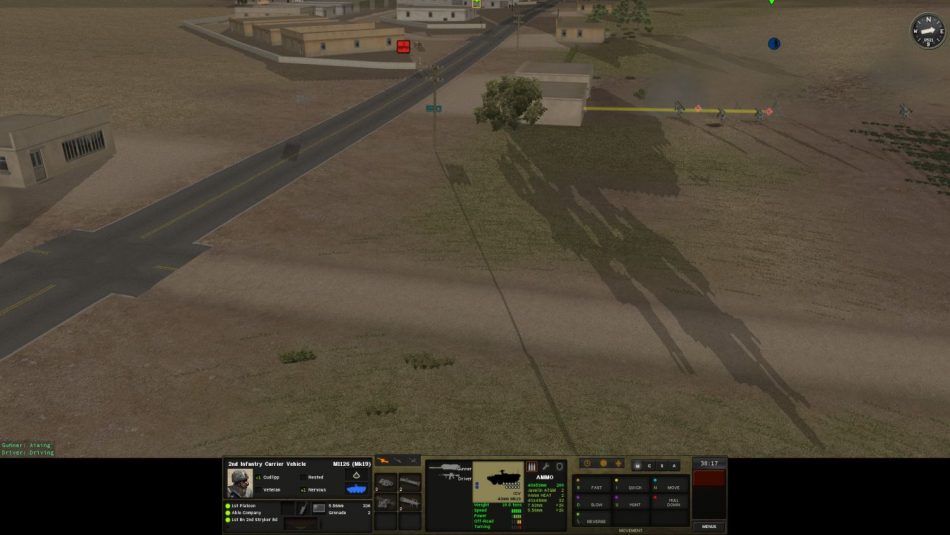
I highly recommend you start with the tutorial in game and have the manual open alongside to help guide you through the familiarization. The four-phased approach walks you through different facets of the controls and then a capstone live-fire exercise. Notably, when you go to the live-fire exercise the map scale and terrain are going to be a little different from the other training scenarios. One glitch from the tutorial is when you get to practice with your sappers, mine did not show up with the shovel symbol but rather a traditional rifle squad symbol. They worked just fine as sappers though! In campaigns and battles, I found my sappers represented correctly with shovels.
The controls are fairly intuitive for anyone with previous RTS experience, but there is an extra layer of depth that lends to realism in being able to order a variety of specific movement speeds and combat targeting options. This is not to say that the controls are perfect, but with the tutorial and a couple of practice battles, it becomes second nature to cycle through the standard combat options. It paid dividends to spend some time watching how fast units moved at the different paces, and be sure to watch your unit’s energy level as an exhausted unit can become a liability.
Pro tip: ensure your waypoints make sense, I want to say this was an experiment but this was carelessness. Shortly after becoming stuck this Stryker received multiple ATGM hits and was no more.
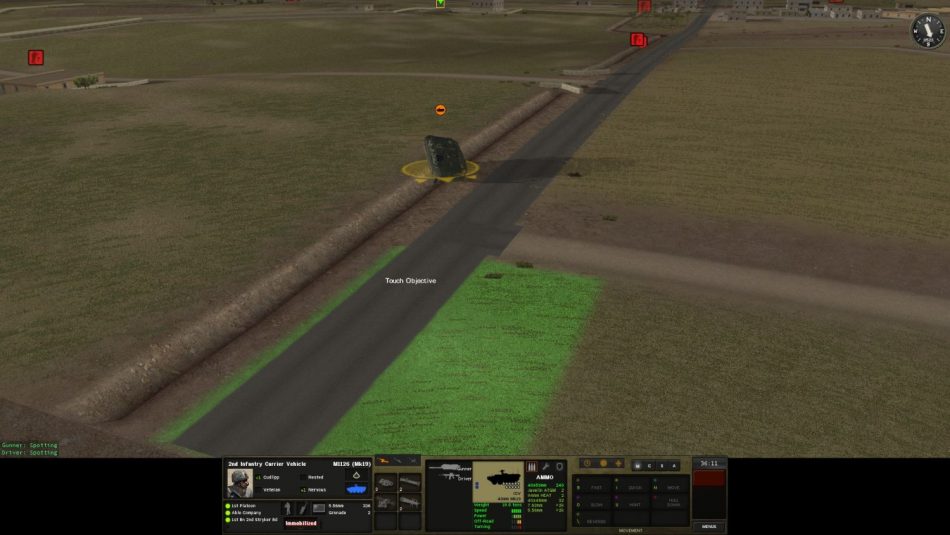
The maps make good use of topography and buildings to create a complex environment. On multiple occasions, I hastily placed units in the high ground only to realize I had not checked their sightlines well enough. Objectives varied across maps from holding buildings to specific pieces of ground. I really enjoyed how buildings were broken out by floors allowing for manipulating the height of a unit for cover and firing line options. When I played United States Forces it was a constant struggle to find avenues of approach that kept me safe from ATGM teams, but careful use of observers and generous applications of artillery helped a great deal.
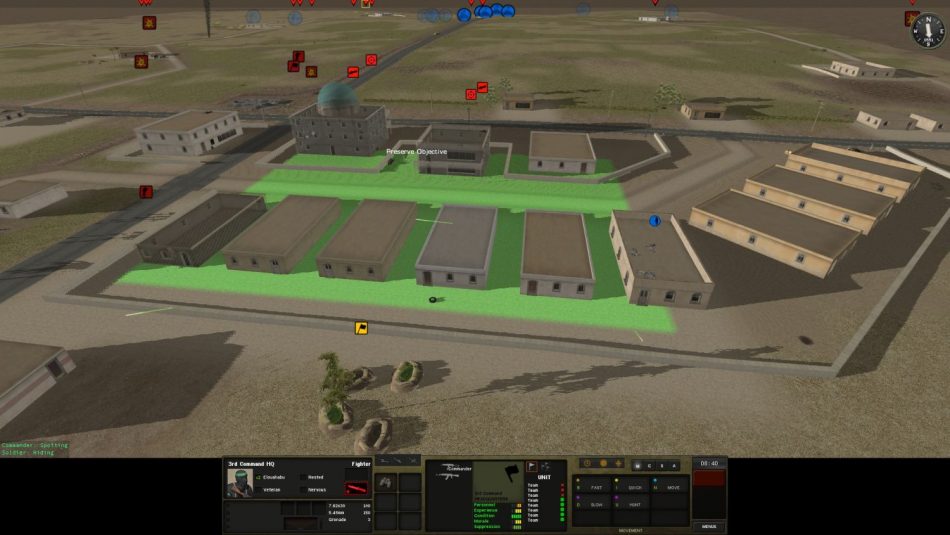
The United States Army had access to an impressive set of firepower with the Abrams, Bradley, Stryker, M113, and Humvee making appearances. It was their support options that really set them apart though with artillery, air, and UAV support. Clearing approach paths with a UAV and taking out troublesome units with artillery and air support was immensely satisfying. US Forces also had night vision which gave a large advantage at night, and they had access to radio equipment that meant sharing information and spotted enemy locations much faster.
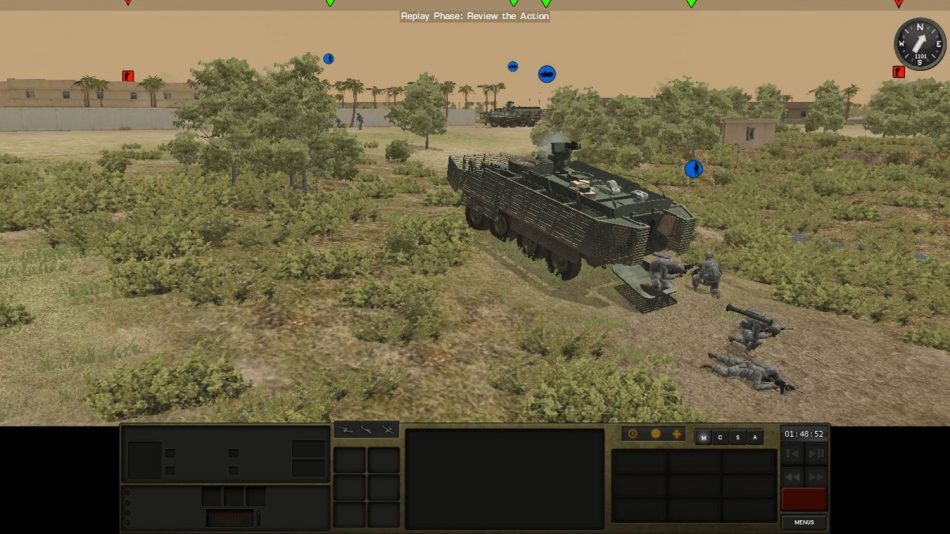
Syria gets access to T-54/55, T-62, T-72 main battle tanks along with BMP infantry fighting vehicle series, along with some basic cars and trucks for transport. Their only available support was artillery in some cases. In both battles I played as Syria I found myself really missing the radio equipment US Forces had.
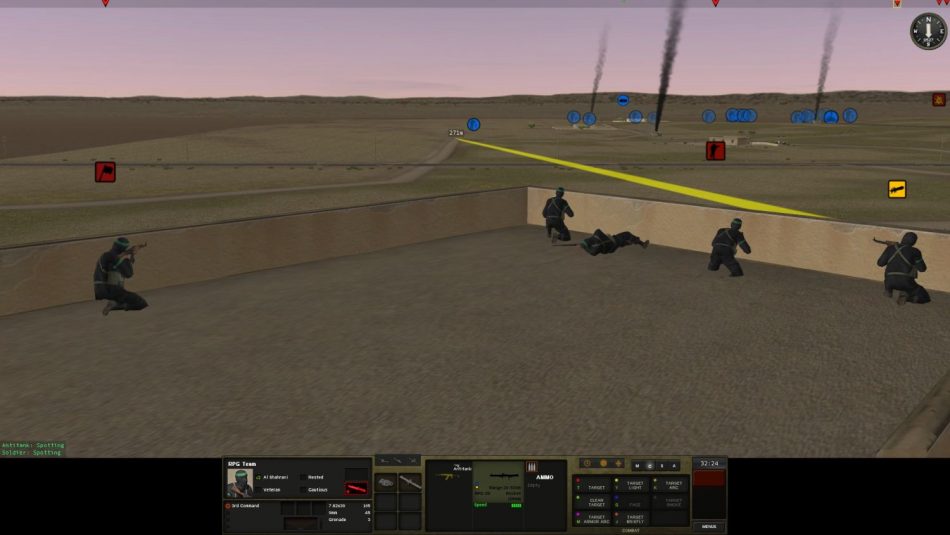
I thoroughly enjoyed my first week with the game and am looking forward to downloading the additional force content and trying to get some multiplayer matches in. Combat Mission Shock Force 2 is a great choice to experience some modern combat and challenge yourself with some real-time action.
